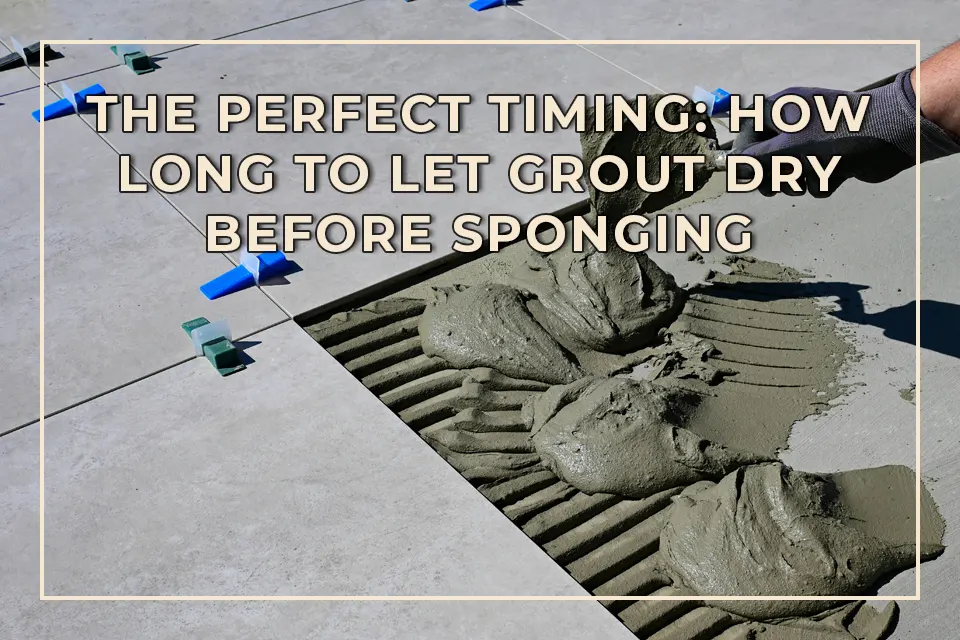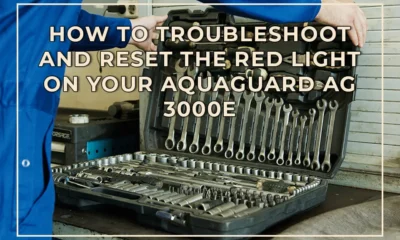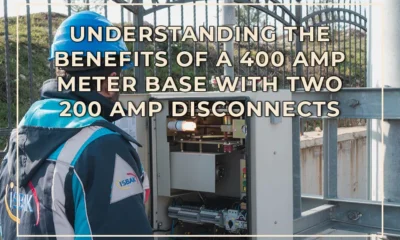DIY Closet
Exploring Alternatives to Water Heater Drain Pans: What You Need to Know

[ad_1]
What You Need to Know About Exploring Alternatives to Water Heater Drain Pans
In this article, we will discuss the different alternatives to traditional water heater drain pans. Whether you are looking to make a DIY solution or explore other options, it’s important to understand what is available and what will work best for your specific needs. We will cover the various alternatives, their benefits and drawbacks, and provide you with the information you need to make an informed decision.
Do I Need a Drain Pan for My Water Heater?
Many building codes require water heater drain pans to prevent water damage in case of a leak. However, if your water heater is located in an area where a leak would not cause significant damage, you may not be required to have a drain pan. It’s important to check your local building codes to determine if a drain pan is necessary for your specific situation.
If you decide that a drain pan is necessary, you have several alternatives to explore, including DIY options and ready-made products.
What Are the Alternatives to Traditional Drain Pans?
One alternative to traditional water heater drain pans is a containment tray. These trays are placed under the water heater and are designed to catch any leaks or spills. They come in a variety of sizes and materials, so you can choose the option that best fits your needs.
Another alternative is a water alarm. These devices are designed to detect leaks and alert you to potential water heater issues. While they do not physically contain water like a drain pan or tray, they provide an early warning system that can help prevent water damage.
DIY Options for Water Heater Leak Protection
If you are looking for a simple and cost-effective solution, you may consider creating your own DIY drain pan using a large plastic tray or container. You can place this under the water heater to catch any leaks or spills. However, it’s important to ensure that the tray is large enough to contain the volume of water that could potentially leak from your water heater.
Another DIY option is to install a drip pan and pipe system that directs any leaking water to a floor drain or other safe location. This can be a more permanent solution that provides added protection against water damage.
Is a Drain Pan the Best Option for Water Heater Leak Protection?
While drain pans are a common choice for water heater leak protection, they may not be the best option for every situation. Depending on the location of your water heater and the potential for water damage, you may find that a containment tray, water alarm, or DIY solution better meets your needs. It’s important to consider the specific requirements of your setup and choose the option that provides the best protection for your home.
Conclusion
When it comes to protecting your home from water heater leaks, there are a variety of alternatives to traditional drain pans. Whether you opt for a containment tray, water alarm, or DIY solution, it’s important to assess your specific needs and choose the option that provides the best protection for your home. By exploring the alternatives and understanding their benefits and drawbacks, you can ensure that you have the right solution in place to prevent water damage.
FAQs
Can I install a water heater without a drain pan?
It depends on your local building codes and the potential for water damage in the event of a leak. Be sure to check with your local authorities to determine if a drain pan is necessary for your water heater installation.
Do water alarms provide the same protection as drain pans?
While water alarms can provide early detection of leaks, they do not physically contain water like a drain pan or tray. They can be a valuable addition to your water heater protection plan, but it’s important to consider their limitations.
Are DIY options for water heater leak protection effective?
DIY options, such as using a plastic tray or installing a drip pan and pipe system, can be effective for catching leaks and preventing water damage. However, it’s important to ensure that your DIY solution is properly sized and installed to provide adequate protection.
What’s the best alternative to a traditional drain pan?
The best alternative depends on your specific needs and the potential for water damage in your home. Consider the location of your water heater, the available space, and the requirements of your local building codes when choosing the right option for your situation.
How can I determine the right water heater leak protection solution for my home?
Assess the potential for water damage, consider the available alternatives, and weigh the benefits and drawbacks of each option. By understanding your specific needs and the available solutions, you can choose the right water heater leak protection for your home.
[ad_2]
DIY Closet
Clear Solutions: A Guide to Replacing Glass on TDL Windows

Replacing glass on TDL (Thermal Double-Layer) windows may seem daunting at first, but it’s a task that can significantly enhance the comfort and aesthetics of your home. This article will walk you through everything you need to know about replacing glass on TDL windows, including its importance, the step-by-step process, and tips to ensure a successful job.
Understanding TDL Windows
TDL windows, or Thermal Double-Layer windows, are designed with energy efficiency in mind. They consist of two layers of glass with a space in between filled with argon or another gas, which serves as an insulator. This feature helps maintain indoor temperatures, reduces energy costs, and minimizes outside noise.
When the glass in a TDL window gets damaged—be it by a storm, an accidental hit, or even wear and tear—it can compromise all these benefits. Understanding how to replace the glass promptly can restore the window’s energy efficiency and aesthetic appeal.
The Importance of Replacing Glass on TDL Windows
Replacing glass on TDL windows isn’t just a matter of looks; it’s essential for various reasons:
- Safety Concerns: Broken glass can pose safety hazards, especially for children and pets. Replacing damaged glass removes the risk of injury from sharp edges.
- Aesthetic Appeal: A window with clear, unbroken glass enhances curb appeal. A damaged window can make your home appear neglected.
- Property Value: Keeping your windows in good condition can increase your property’s value, attracting potential buyers should you decide to sell.
- Protection from Elements: Replacing the glass can also prevent water leaks and further damage to window frames, protecting your home from mold and deterioration.
Benefits of Replacing Glass on TDL Windows
The benefits of replacing glass on TDL windows extend beyond mere aesthetics. They include:
- Improved Insulation: Modern replacement glass typically comes with better insulation properties. You’ll find options with low-emissivity (Low-E) coatings that reflect heat back inside during winter and keep it out during summer.
- Lower Utility Bills: As your home’s energy efficiency improves, you can expect a reduction in monthly utility bills.
- Enhanced Comfort: Properly sealed and insulated windows help maintain a consistent indoor temperature, making your home more comfortable year-round.
- UV Protection: Replacing old glass with new, treated glass can offer better UV protection, helping to keep your furniture and carpets from fading.
- Noise Reduction: New glass technology can also help with reducing noise from the outside, creating a quieter home environment.
Step-by-Step Guide: How to Replace Glass on TDL Windows
Replacing glass on TDL windows might sound intimidating, but breaking the process down into manageable steps makes it straightforward. Here’s a step-by-step guide:
Step 1: Gather Your Tools and Materials
You’ll need:
- Safety goggles and gloves
- A utility knife
- A glass cutter
- Measuring tape
- Replacement glass (cut to size)
- Silicone sealant
- Putty knife
- Glazing points or clips
- A clean cloth
Step 2: Measure the Glass
The first step in replacing glass on TDL windows is to accurately measure the existing glass pane. Use a measuring tape and write down the dimensions. Ensure you measure the height and width at multiple points to account for any irregularities.
Step 3: Remove the Old Glass
Using a utility knife, carefully cut through any paint or sealant around the glass. If the glass is broken, be extra careful. Remove any shards and then use your putty knife to pry out the old glass. Ensure you remove all the glazing points or clips securing it in place.
Step 4: Clean the Frame
Once the old glass is removed, clean the window frame thoroughly. Remove any debris, old sealant, or paint remnants. Your new glass will adhere better to a clean surface.
Step 5: Install the New Glass
Apply a bead of silicone sealant around the frame’s edge where the glass will sit. Place the new glass pane in the frame, ensuring it fits snugly. Secure it with glazing points or clips to hold it in place.
Step 6: Seal the Edges
Once the glass is securely placed, apply another bead of silicone sealant around the edges. This will help create a weather-tight seal, enhancing insulation and preventing water leaks.
Step 7: Clean Up
After installation, carefully clean any excess sealant or debris from the glass surface and frame. Replace any window trim that you had to remove during the process.
Tips for Successfully Replacing Glass on TDL Windows
Safety First: Always wear protective gear like gloves and goggles when working with glass. Sharp edges can pose a risk of injury.
Get Accurate Measurements: Take your time to measure several times. An accurate fit will make your installation easier and more effective.
Consider Professional Help: If you’re not confident in handling glass work, consider hiring a professional. Mistakes can be costly and may worsen the issue.
Check for UV Coatings: When purchasing replacement glass, consider those with UV resistance to protect your interior from sun damage.
Evaluate Frame Condition: Before installing the new glass, check the frame for rot or damage. If the frame is compromised, you may need to repair or replace it as well.
Common Mistakes to Avoid When Replacing Glass on TDL Windows
Not Sealing Correctly: Failing to apply sealant around the edges can lead to air or water leaks. Always ensure a proper seal.
Poor Measurements: Inaccurate measurements can lead to a poor fit. Double-check all dimensions before cutting your new glass.
Ignoring Frame Condition: Overlooking frame damage can lead to future issues. Always inspect your window frame before installation.
Skipping the Cleaning Process: Failing to clean the frame thoroughly can lead to adhesion issues. Always remove old debris for best results.
FAQs About Replacing Glass on TDL Windows
How much does it cost to replace glass on TDL windows?
The cost can vary significantly based on glass type and window size, typically ranging from $100 to $500 for a professional installation. DIY costs may be lower, depending on materials used.
How long does it take to replace glass on TDL windows?
The time frames depend on skill level and whether complications arise, but most single-pane replacements can be done in under two hours.
Can I replace glass on TDL windows myself?
Yes, it’s a manageable DIY project if you’re comfortable with basic tools. However, hiring a professional may ensure a more reliable outcome.
Are TDL windows energy-efficient?
Yes, TDL windows are designed to maximize energy efficiency due to their double-layer glass and insulated gaps, helping reduce heating and cooling costs.
Conclusion: Replacing Glass on TDL Windows for Better Living
Replacing glass on TDL windows is an essential task that can enhance not only the aesthetic appeal of your home but also improve energy efficiency, safety, and comfort. By following the outlined steps and tips, homeowners can tackle this job with confidence. Remember, if you feel uncertain at any stage, it’s always wise to consult a professional. Investing the time and resources now can lead to a more comfortable and aesthetically pleasing home for years to come.
DIY Closet
Transform Your Space: Why a Sliding Glass Door is the Perfect Upgrade from a Roller Door

Introduction to Replacing Roller Doors with Sliding Glass Doors
When it comes to enhancing your home’s aesthetic and functionality, one of the most transformative changes you can make is replacing your old roller door with a sliding glass door. Roller doors, often found in garages and commercial spaces, offer convenience and security but can sometimes be bulky and unattractive. On the other hand, sliding glass doors provide a contemporary look while allowing natural light to flood into your spaces. In this comprehensive guide, we’ll delve into the importance and benefits of switching from a roller door to a sliding glass door, provide a step-by-step guide on how to make the transition, offer insider tips, address common mistakes, and answer your frequently asked questions.
The Importance of Choosing the Right Door
Choosing the right door for your home is more than just a matter of aesthetics; it is crucial for functionality, security, and energy efficiency. In many households, the door serves as the primary entry and exit point, making it essential to select a type that balances style with performance. Roller doors, while effective for security and ease of operation, often fail to make a pleasing architectural statement. By opting for a sliding glass door, homeowners can effectively merge beauty with practicality.
Sliding glass doors not only improve the visual appeal of your space but can also enhance the overall ambiance of your home. They enable a seamless transition between indoor and outdoor areas, making your living spaces feel larger and more open. In essence, the right choice of door is foundational to creating a home that reflects your style and meets your daily needs.
Benefits of Replacing Roller Doors with Sliding Glass Doors
Enhanced Aesthetic Appeal
First and foremost, sliding glass doors introduce elegance and modernity to both the interior and exterior of your home. With an array of designs to choose from, homeowners can pick doors that complement their décor and improve curb appeal. This upgrade can significantly increase your property’s overall value.
Improved Natural Light
Sliding glass doors can flood your living area with natural light, creating a welcoming atmosphere. Natural light is known to enhance mood and overall well-being, making your home a more pleasant place to live. Unlike roller doors, which often block light, sliding glass doors allow for unobstructed views of your garden, patio, or backyard.
Better Energy Efficiency
Today’s sliding glass doors come equipped with advanced insulation technologies and energy-efficient glass. This means that while they let in sunlight, they also help to maintain the interior temperature of your home. As a result, they can keep your energy bills in check by reducing your dependence on heating and cooling systems.
Seamless Indoor-Outdoor Living
One of the most enticing benefits of sliding glass doors is their ability to create a seamless transition from Indoors to outdoors. Whether you’re hosting a summer barbecue or simply enjoying a quiet evening, these doors allow for a fluid flow between spaces. This enhances the functionality of your living areas, giving you the freedom to entertain or relax with ease.
Better Security Features
While roller doors can offer good security, modern sliding glass doors come equipped with advanced locking mechanisms and frame reinforcements that enhance safety. This makes them a viable choice for homeowners concerned about break-ins. The transparency of sliding glass also serves as a natural deterrent, making it harder for potential intruders to hide their actions.
Noise Reduction
Many sliding glass doors are designed with soundproofing features, which can significantly reduce external noise. This is particularly beneficial if you live in a busy neighborhood or near a noisy street. Upgrading to a sliding glass door can create a more peaceful indoor environment.
Easy Maintenance
Maintaining sliding glass doors is generally easier than caring for roller doors. A simple routine of cleaning and lubrication keeps them functioning smoothly. They often require less upkeep in terms of mechanical parts, as they don’t have the components that often break down in roller doors.
Step-by-Step Guide to Replacing Roller Doors with Sliding Glass Doors
Replacing a roller door with a sliding glass door may seem daunting, but with careful planning and execution, it can be a straightforward project. Follow this step-by-step guide:
Step 1: Measure Your Space
Before purchasing a sliding glass door, accurately measure the space where the roller door currently resides. Measure both the height and width, and check for any obstructions in the surrounding area that could impact the installation.
Step 2: Choose Your Door
Select a sliding glass door that suits your aesthetic preference and fits your measurements. Pay attention to energy efficiency ratings, security features, and design elements that align with your home’s architecture.
Step 3: Gather Your Tools
You will need essential tools including a measurement tape, screwdriver, and level. Depending on the installation method, you may also require additional tools like a saw and drill.
Step 4: Remove the Roller Door
Carefully remove the roller door. If it is a manual door, you will typically lift it off its tracks. For electric doors, disconnect any electrical components first. Properly dispose of the old door according to your local regulations.
Step 5: Prepare the Opening
Inspect the opening to ensure it is level and structurally sound. You may need to adjust the frame slightly or repair any damage incurred during the removal process.
Step 6: Install the New Sliding Glass Door
Follow the manufacturer’s instructions to install the new sliding glass door. Ensure that it is level and securely fastened. Adjust any hinges or tracks as necessary for smooth operation.
Step 7: Seal the Edges
Use weather stripping and caulk to seal any gaps around your newly installed sliding glass door. This will enhance its energy efficiency and prevent drafts.
Step 8: Test Operation
Finally, test the sliding mechanism thoroughly. Ensure that the door opens and closes smoothly and that all locking mechanisms function properly.
Tips for a Successful Transition
- Choosing the Right Door: Consider the dimensions and the overall décor of your home when selecting your sliding glass door.
- Professional Help: If you’re uncertain about your DIY skills, consider hiring a professional for installation.
- Weather Considerations: Check weather forecasts before beginning the project to avoid working in unsuitable conditions.
- Involve Family: This can be a family project that brings everyone together. Leaning on others’ strengths can make the process smoother.
- Post-Installation Care: Regularly clean and maintain your sliding glass door to keep it in optimal shape.
Common Mistakes to Avoid
When replacing a roller door with a sliding glass door, it’s essential to avoid these common mistakes:
Skipping Measurements
One of the most frequent issues arises from inaccurate measurements. Always double-check your dimensions before purchasing a sliding glass door.
Ignoring Energy Efficiency
Prioritizing style over energy efficiency can lead to increased heating and cooling costs. Always invest in energy-efficient designs to save in the long run.
Inadequate Sealing
Neglecting to properly seal the door can result in drafts, increasing energy costs and decreasing comfort levels.
Rushing the Installation
Take your time during the installation process. A rushed job can lead to misalignment and mechanical issues down the line.
Frequently Asked Questions
What is the average cost of replacing a roller door with a sliding glass door?
The cost varies based on the size and style of the sliding glass door. On average, you can expect to pay between $1,500 and $3,500, including installation. Always get multiple quotes to find the best deal.
Can I install a sliding glass door myself?
If you have basic DIY skills and the right tools, you can install a sliding glass door yourself. However, always read the manufacturer’s instructions and consider hiring a professional if you’re unsure.
Are sliding glass doors secure?
Yes, modern sliding glass doors come with advanced locking systems that enhance security. Ensure that you choose a reputable brand and verify features like multi-point locks.
How much light do sliding glass doors let in?
Sliding glass doors allow natural light to enter your home efficiently, brightening your space without compromising privacy.
What are the best materials for sliding glass doors?
The best materials for sliding glass doors include vinyl or fiberglass frames for durability and energy efficiency. Additionally, tempered glass provides added safety.
Conclusion: Embrace the Upgrade
Replacing a roller door with a sliding glass door is a worthwhile investment that can enhance your home in numerous ways. By understanding the benefits and following the steps outlined in this guide, you can transform your space into a brighter, more stylish environment. With careful planning, attention to detail, and proper installation, you can enjoy the many advantages of your new sliding glass door for years to come. Embrace this upgrade to not only increase your home’s value but also to enjoy the wonderful ambiance it brin
DIY Closet
The Perfect Timing: How Long to Let Grout Dry Before Sponging

Grout is an essential component in tiled installations, providing both aesthetics and stability. Knowing how long to let grout dry before sponging helps ensure that your tiles remain intact and your grout stays in place. This article explores the importance of letting grout cure properly, its benefits, and a step-by-step guide to achieving optimal results.
Introduction to Grout and Sponging
Grout is a mixture of water, cement, and sand used to fill the gaps between tiles. Once you’ve laid down your tile, flooded the spaces with grout, and wiped excess off the surface, it’s crucial to allow that grout to set before taking the next steps, like sponging. Sponging helps to clean the tile surface and shape the grout lines but can disrupt the grout if done too soon.
Knowing the right time to sponge your grout can make a significant difference in the quality and longevity of your tiling project. In the following sections, we’ll delve deeper into the importance of timing and provide a comprehensive guide on how to achieve the best results with your grout work.
Importance of Allowing Grout to Dry
Why Timing Matters
Allowing your grout to dry sufficiently before sponging is critical for several reasons. If grout is sponged too early, it may lose its integrity, leading to cracking and uneven surfaces. Insufficient drying time can also result in the grout not adhering properly to the tiles, which could endanger the stability of your tiled surface.
Ensuring a Quality Finish
Grout that is allowed to cure properly will not only provide a more polished look but will also be more durable. Sponging premature grout can smear, leading to unsightly sections that might require redoing. Furthermore, inappropriate timing can lead to grout haze on tile surfaces, making them look unclean and uneven.
Understanding Curing Times
Most grout types will require different curing times, so it’s essential to read the manufacturer’s instructions. For standard cement-based grout, you typically need to allow at least 24 hours before sponging, although some situations may require longer.
Benefits of Proper Grout Drying Time
Enhanced Durability
Taking the time to let your grout dry ensures a stronger bond. Good-quality grout is resistant to moisture, stains, and cracks, all of which can compromise your tile installation. Properly dried grout can last for years with minimal maintenance, making your investment worthwhile.
Aesthetic Appeal
What’s more appealing than a beautifully tiled floor or wall? Properly applied grout not only enhances the overall appearance of the installation but also makes it easier to clean. When sponging is done at the right time, the tiles shine, and the grout lines are neat and clean, adding to the beauty of your home.
Time and Cost-Efficiency
While waiting for the grout to dry may seem like a delay, it saves time in the long run. Redoing grout work due to hasty cleaning can lead to extra costs, both in materials and labor.
Step-by-Step Guide: How Long to Let Grout Dry Before Sponging
Initial Clean-Up
Once you’ve applied the grout and removed excess from the tile surfaces, refrain from any further cleaning. This is the first step toward ensuring the grout has ample time to set.
Recommended Drying Time
- Consult Manufacturer Guidelines: Always start by checking the product label for specific drying times.
- General Rule of Thumb: For most cement-based grouts, you should wait at least 24 hours before sponging. If you’ve used an epoxy grout, follow the manufacturer’s instructions, as drying times can vary.
Conducting a Touch Test
After 24 hours, perform a touch test:
- Select a Corner: Choose an inconspicuous area.
- Gently Press: Using a finger, press lightly on the grout.
- Assess the Texture: If it’s still soft or crumbles, let it sit longer.
If hard and set, it’s time to sponge!
The Sponging Process
- Soak Your Sponge: Use a clean sponge and soak it in water, then wring it out.
- Gentle Application: Lightly sponge the grout lines, making sure not to apply too much pressure.
- Rinse and Repeat: Clean your sponge frequently to avoid spreading excess grout.
Expert Tips for Sponging Grout
Opt for a Quality Sponge
A high-quality, natural sea sponge is often the best choice. It’s gentle enough not to disturb softer grout but firm enough to effectively clean.
Work in Small Sections
Tackle one section of your tile at a time. This allows you to manage the drying time better and ensures you don’t miss spots.
Rinse Regularly
Always rinse your sponge in clean water to avoid leaving cloudiness on your tiles. This keeps your sponging efforts effective and pristine.
Avoid Excessive Water
While it’s tempting to use a lot of water, excessive moisture can weaken the grout. Aim to keep your sponge damp, not dripping wet.
Common Mistakes When Sponging Grout
Sponging Too Soon
One of the most common mistakes is attempting to clean the grout too early. This can lead to smearing and an uneven finish, necessitating a redo of the grout work.
Applying Too Much Pressure
Many people instinctively scrub hard when they sponge. However, applying excessive pressure can disrupt the grout and lead to defects.
Ignoring Manufacturer Instructions
Grout products can vary widely in their formulation and curing times. Always consult the packaging for best results.
Over-Wetting the Area
Saturating your tiled area can be detrimental. Excess moisture can seep into the grout and weaken its bond to the tile.
FAQs About Grout Drying and Sponging
How long does grout need to dry before getting wet?
Grout typically needs at least 24 hours to dry, but refer to the manufacturer specifications as drying times can vary.
Can I sponge grout with vinegar or other cleaners?
It’s generally advised to avoid using harsh chemicals or vinegar until the grout has fully cured. Stick to water until the grout is set.
What happens if I sponge too soon?
Sponging too early can lead to a messy finish, crumbling grout, and an overall unstable installation.
How can I tell when the grout is fully cured?
A well-cured grout will feel hard to the touch and not crumble or mark easily when pressed.
Conclusion: Mastering the Art of Grouting
Understanding how long to let grout dry before sponging is essential for a beautiful and long-lasting tile installation. By allowing adequate drying time, you enhance the durability and aesthetics of your grout work while saving time and money in the long run. By following this guide, you can tackle your tiling projects confidently and successfully. Proper timing and techniques can elevate your home’s appearance and ensure your tiled spaces remain intact and stunning for years to come.

 DIY Closet2 years ago
DIY Closet2 years agoHow to troubleshoot and reset the red light on your Aquaguard AG 3000E

 DIY Closet2 years ago
DIY Closet2 years agoHow to Install a Drop-In Sink Without Clips: A Step-by-Step Guide

 Bug Fixing2 years ago
Bug Fixing2 years agoUnderstanding the Cost of Furnace Collector Box Replacement: What to Expect

 DIY Closet2 years ago
DIY Closet2 years agoPergola Design: Understanding the Maximum Span for 6×6 Beams

 DIY Closet2 years ago
DIY Closet2 years agoThe Best Nails for Luan: A Comprehensive Guide

 Bug Fixing2 years ago
Bug Fixing2 years agoPigtail vs Daisy Chain Outlets: Which is Better for Your Home?

 DIY Closet2 years ago
DIY Closet2 years agoHow to Build a Free Standing 6×6 Post Swing Set: A Step-by-Step Guide

 DIY Closet2 years ago
DIY Closet2 years agoUnderstanding the Benefits of a 400 Amp Meter Base with Two 200 Amp Disconnects




















